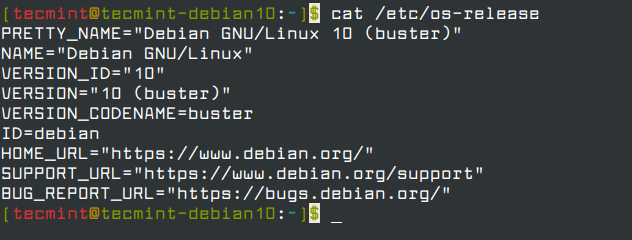
- #WHAT IS MY DEVICE NAME DEBIAN LINUX INSTALL#
- #WHAT IS MY DEVICE NAME DEBIAN LINUX DRIVERS#
- #WHAT IS MY DEVICE NAME DEBIAN LINUX MANUAL#
The first thing I noticed was that when I changed the resolution of the monitors, the settings would be lost after reboot, so I added these xrandr commands to my autostart.sh and both get set when I login: I downloaded the 32bit version from HERE, made a Crunchbang pendrive via Unetbootin, installed and set about configuring it to be used as a desktop. and an Asus Netbook, so I thought what the hell and set about removing Ubuntu (slow as a snail, painfully slow) and installing my trusty old friend Crunchbang (which i’m typing from now). This left me with a monitor, keyboard and mouse in our bedroom…. I moved my main computer tower into the lounge and it now serves as our main media center, with xbmc, spotify, games etc. It’s been a while since i’ve posted as a new business project has had me using Windows a lot, yeah I know, but hey, life’s like that sometimes. Rebooted into a system with awesome internet cow-power-fu speeds!! Then manually added the Google dns addresses:
#WHAT IS MY DEVICE NAME DEBIAN LINUX MANUAL#
Just needed to add my manual network config: Sudo echo "manual" | sudo tee /etc/init/network-manager.overrideĨ. Sudo mv /etc/xdg/autostart/sktop /etc/xdg/autostart/BKPnm-applet Swap nm-applet and network-manager for a Manual Static Wireless Connection:įirst I disabled nm-applet from autostarting: Next up was to disable ipV6 system wide:Įcho "#disable ipv6" | sudo tee -a /etc/nfĮcho ".disable_ipv6 = 1" | sudo tee -a /etc/nfĮcho ".disable_ipv6 = 1" | sudo tee -a /etc/nfĪnother thing I had heard is that sometimes powercontrol can interfere with wireless speed as well so I disabled it for the USB dongle:ħ. In the address bar I typed “ about:config” and changed “ 6” to “ true” with a double-click.ĥ. After these hardware changes, it was time to go for some terminal-fu and edit a few files to get some extra internet speed. Moved the Dongle from the front USB2 connector to a blue USB3 connector at the back, and I noticed a slight speed increase. After changing to TKIP I could connect, allbeit with a slow connection due to packet loss.
#WHAT IS MY DEVICE NAME DEBIAN LINUX DRIVERS#
My first suspicon about the lack of connection was the encryption method and maybe the latest RT3370 drivers and wpasupplicant. After investigating and playing around, this is my list of changes which got me sorted:Ĭonnect to the router and change the WPA2 encryption from AES to TKIP.

#WHAT IS MY DEVICE NAME DEBIAN LINUX INSTALL#
On a recent new install of Crunchbang 11 I was having major problems connecting to my router with a Ralink RT3370 wireless USB dongle from my main tower.


Thanks to anonymous_user at Arch forums for the trick: # set PATH so it includes user’s private bin if it exists # the files are located in the bash-doc package. # see /usr/share/doc/bash/examples/startup-files for examples. # ~/.bash_profile: executed by bash(1) for login shells. The problem was that, eventhough it only takes a milisecond, having to type “startx” annoyed me, so I set about trying to find an autostart-startx at login solution.įirst I created a. Launching Openbox at Login without typing “startx”Ĭontinuing with my effort to get the maximum performance out of my Crunchbang driven EeePc, I removed Slim login manager in favour of a simple console username and password login.


 0 kommentar(er)
0 kommentar(er)
